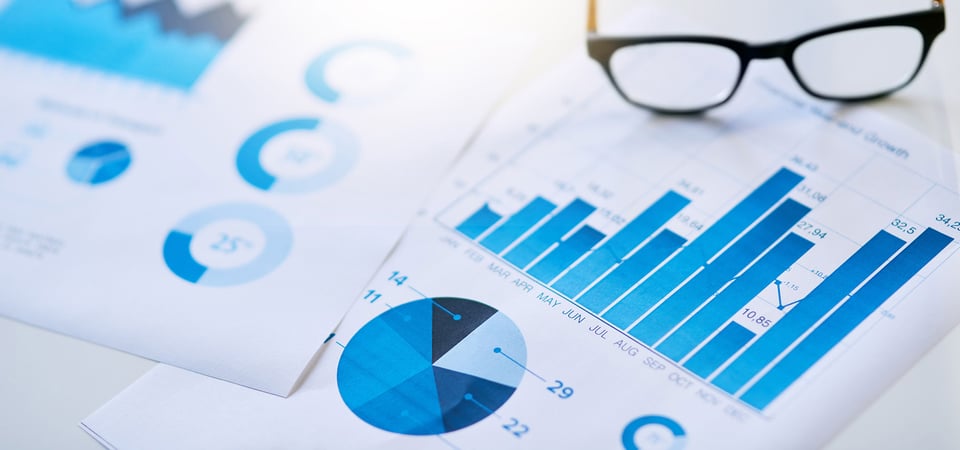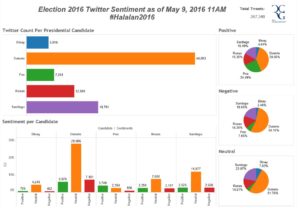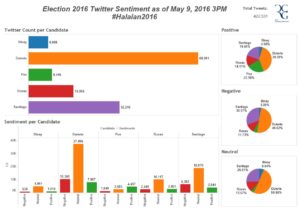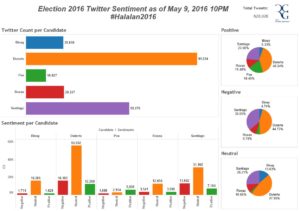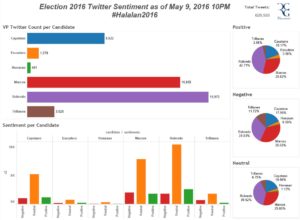by Shirley Santiago –
Elections are often unpredictable events. Even elections that are thought to be predictable sometimes deliver results that defy predictions.
But as our RCG Global Services team recently demonstrated during the 2016 Philippine elections, the ability to accurately predict election results may have taken quite a leap forward. Watch closely and analyze carefully, and the voting public may tip their hand about how they’re going to vote – and much more.
Goals, Tools, and Technology
Our analysis focused on three key areas:
- Analysis of general voter sentiment on the days leading up to, and following, the 2016 elections
- Analysis of voter sentiment following the Vice Presidential debate
- Analysis of voter sentiment following the third Presidential debate
The scope of the project included:
- The configuration and installation of Hortonworks Data Platform on an 8-node cluster (Hortonworks provides a wealth of technical details and how-tos for sentiment analysis)
- The collection and ingestion of Twitter feeds using Apache Nifi and Yandex Translator (the team enhanced language translation to enable Tagalog to English translation)
- Creation of a Sentiment Dictionary of about 144,000 words (sourced partly from LIWC, Sentiwordnet, Sentiment140, and Sentdex)
- Sentiment analysis performed using Zeppelin, Tableau, and Enhanced Sentiwordnet
The purpose of this project was to analyze voters’ sentiment regarding the Philippine 2016 elections. This election was considered to be particularly important to Filipinos, and might be considered one of the most important elections1 in the recent history of the Philippines.
So there was plenty of voter sentiment to be analyzed.
Tell Us How You Feel
Walk up to any voter and ask how they voted, or how they will vote, and they might just tell you that it’s none of your business. Most consider voting, after all, to be a very private business – curtained polling booths and all that.
But privacy aside, voters are saying plenty about how they’re feeling in the days leading up to an election. They’re doing that through social media outlets such as Twitter.
Could the analysis of such voter sentiment actually be used to predict the outcome of an election? The answer, as it turned out, was yes – and to a startling degree of accuracy.
Presidential Debate Analysis Left Little to Debate
Though the RCG team analyzed voter sentiment for the entire election, let’s specifically consider the presidential and vice-presidential elections.
The team analyzed sentiment generated from the third presidential debate, which was also the final presidential debate. The before, during, and after results were as follows:
As you can see, Rodrigo Duterte took the lead in public sentiment during and after the debate.
Duterte was not favored going into the election. His victory was considered by many to be quite a surprise2. But for those who were paying attention, the voters were revealing who they favored going into the election. Sentiment analysis of the third debate alone tipped the voters’ hands.
Vice Presidential Debate Analysis Left Much to Debate
The vice presidential debate was a different story.
Voter sentiment analysis revealed no clear winner between the two leading contenders, Leni Robredo and Bongbong Marcos. And yet the no-call turned out to be extremely predictive. Because as it turned out, the initial election result also revealed a razor-thin differential between the leading candidates.
The result was so close that, as of this writing, the VP election result is still under legal contest by the losing candidate, Marcos.
Plenty of Reason to be Serious about Public Sentiment
The results of the RCG team’s voter sentiment analysis for the 2016 Philippine election should be of more than just idle interest to most business executives. Most businesses, after all, have votes cast for or against them on a daily basis.
Customers vote — favorably or unfavorably — with their feet, and with their wallets. They do that every hour of every day.
Are they casting their votes in favor of your business? Or are they voting for the opposing candidate, your competitor? Wouldn’t you like to know which way they’re leaning before they actually cast the vote?
Our team demonstrated that in the age of Big Data, it’s very possible to measure the pulse of the public by analyzing public sentiment – just as they did with the voters in the Philippine 2016 election.
We’ll be conducting a similar analysis of the voter sentiment leading up to the 2016 U.S. Presidential elections. Stay tuned for an update.
Works Cited
1. CNN. (2016, April 26) "Philippines election: Why fatigued voters yearn for ‘strongman’ leader" Retreived from https://www.cnn.com/2016/04/26/opinions/philippines-election-analysis/
2. The Diplomat (2016, May 12) "The Many Surprises of the 2016 Philippines Elections"
Retrieved from https://thediplomat.com/2016/05/the-many-surprises-of-the-2016-ph

